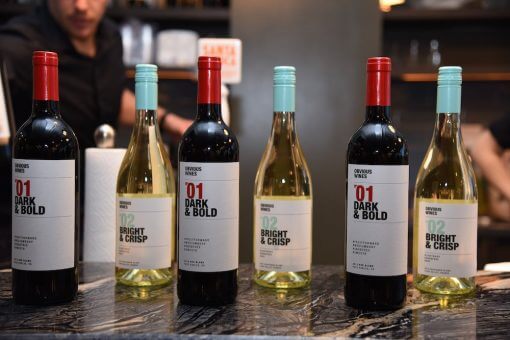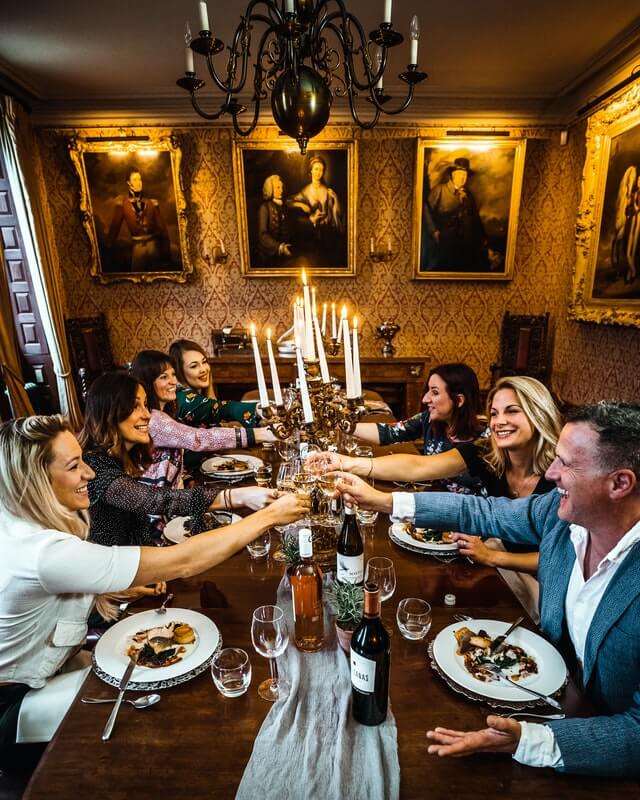Be social! Share the fun!
7 Secrets of Reading a Wine Label You’ll Love
Wine labels—what is the best way to read one?
Imagine facing a wall of wine in a supermarket, wine shop, or even online.
What clues can a wine label forecast so you understand the “type” or “style’ of wine behind the wine label?

Sophisticated French Tasters
You might find it amusing that a sophisticated French man asked the same question about wine labels.
Brice Baillie, a highly educated executive for the Paris-based L’Oreal cosmetics company, faced a wine label issue while in an American shop.
French people enjoy a reputation for “magically” understanding what’s inside a wine from their wine labels.
Yet Mr. Baillie, while fluent in English and aware of French wine regions, knew little about American wine.
Wine Labels in California

California produces most wine in the USA.
The best quality falls under the various Appellation Viticultural Areas (AVA) that appear on the wine labels.
Yet looking at a San Luis Obispo AVA on a wine label, told Mr. Baillie nothing about how a wine tasted, or what type of food to pair with it.
Though Mr. Baillie had never worked in the wine business, he had an inherent love of food and wine. He also collected French wine

Armed with an MBA and his experience working in finance at L’Oreal, Mr. Baillie decided to create his own wine brand.
The first step was to create a wine label.
Mr. Baillie specifically wanted a “transparent” wine label that told the story of the wine.
He wanted his wine label to explain “everything” possible about the wine.
This meant where the grapes were sourced, the texture of the wine, the various components of the wine (acid, tannin), the texture and/or weight of the wine, and appropriate food pairings for the wine.
Easy to Read Wine Label Graphic
Then, he wanted a very easy-to-read graphic on the wine label—an image other than a remote hilltop castle edged in gold.
Working with a friend who was a graphic designer, Mr. Baillie borrowed a familiar tactic from the cosmetics industry.
This tactic was to use a combined number and descriptor, such as the Number 01 Dark & Bold used for his Paso Robles blend.
“People get intimidated by wine,” Mr. Baillie told me in an interview. “I want to take that factor away.”
Sourcing the Grapes

Once the concept and the infographic style of the wine label took form, the next step was finding where to source the grapes.
Mr. Baillie wanted to source only organic grapes. He created partnerships with various family owned wineries in California and France.
“It is important to me to convey that the wine is organic or biodynamic. I want to be transparent about this on the label,” he said.
Shark Tank TV Show and Marketing
Now that he had a variety of elements in place, Mr. Baillie concentrated on understanding the American 3-Tier system, including distribution to shops and restaurants.
With his natural charm and enthusiasm for his product, he paid in-person sales calls to restaurants.
Soon, the Obvious Wines brand was up and running, driven by the “transparent” wine label.
But the factor that took it over the edge was Mr. Baillie’s application to the Shark Tank TV show

Once accepted, Mr. Baillie went into the Tank seeking an investment of $150,000 in exchange for five percent equity.
On the show, he accepted an offer from “shark” Lori Greiner: $160,000 for 12.5 percent. But after the episode aired, Mr. Baillie and Ms. Greiner did not agree on the terms of the deal.
“Shark Tank was great because of the exposure. We still get emails from people who saw us,” he says of the experience.
Since then, Brice Baillie has been listed in Wine Business Monthly in a variety of ways, including the top 50 Brands of 2019.
When you see a wine bottle from Obvious wines, the taste of the wine is, well, obvious.
But what if you don’t see a bottle of Obvious wines? How can you tell what’s inside???
Supermarkets

Supermarkets can organize wine in several ways.
Most often, you will see the more expensive wines on the top shelf. Eye level often features the most popularly priced wines. And if you bend down to about shoe height, you will see the very cheapest wines.
Know Your Price, Style, and Pairing in Advance
If you’re buying wine for a specific meal, this will guide your choice.
So will the price you have in mind? For $20, you can buy a pretty good quality wine.
When I interviewed the owner of Bottlerocket (located in NYC, but they also ship), owner Tom Geniesse explained that he set the entire store up with food pairing in mind. And if you’re ordering food-to-go, Bottlerocket even has a wine section especially suited for “Takeaway Wine.”
Mr. Baillie’s concept and wine was so unique it was featured on http://Entrepreneur Magazine
American, European, or South American Wine?
A decade ago, you would find more dramatic differences between wine from the USA and France, Italy, Spain, and South America.
Nowadays–especially with quality producers–the differences are more subtle.
On blind tasting wine examinations, such as the Masters of Wine, the examiners sometimes deliberately give students a Chardonnay from Sonoma in an “Old World style” and one from Burgundy made in a “New World” style.
Because some examples transcend “Old and New World,” wine lovers now move away from using the country of origin as a market for the style they prefer.
Does Alcohol Matter?
The amount of alcohol in a wine matters more than you might think. The difference between a moderate 12.5% wine and one that is 15.5% doesn’t seem like much.
What is an extra 3%, anyway?
Yet that 3% can be an important factor for health and safety.
And a wine at the higher range of alcohol demands a heavier type of food, or the marriage between the wine and the dish will seem off center.
Supermarket “Sure Bets?”
Sure. I can name a few. But it would be like whispering the answers to an important exam.
The internet overflows with some great resources. Check out these free resources to learn wine fast!